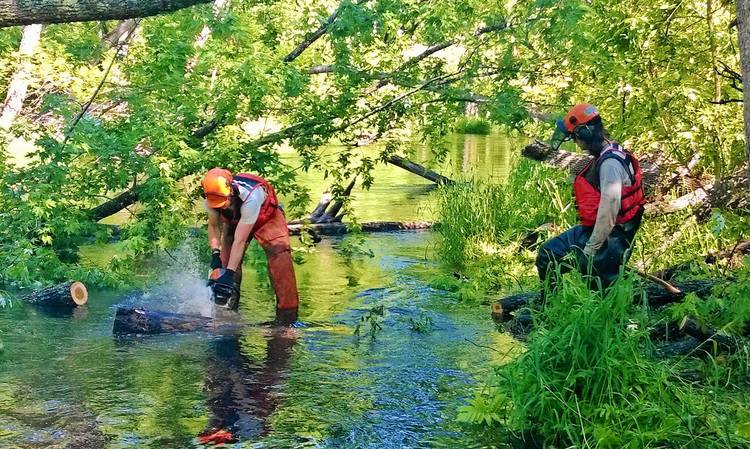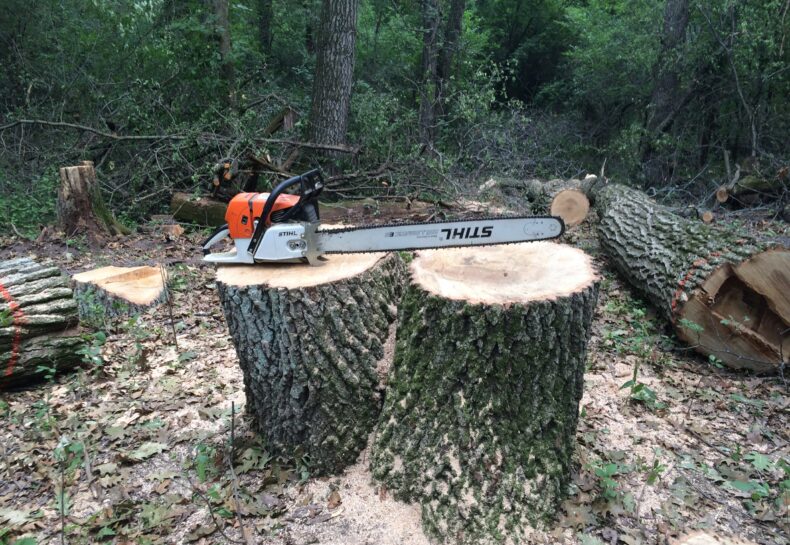Field Crews
“What are you guys doing out here?”
I’ve fielded this question a time or two while out in the field. It typically comes from an innocently curious passerby, but occasionally it’ll show up decorated with less-than-appropriate verbiage. In either case, it’s certainly an inquiry within reason and I’ve become fond of the opportunities that follow. Read More
October reflections
October already! For the Ottertail crew, this means hot chocolate, long johns, and an end to the camping season. One thing I really enjoy about staying in cabins and roadside motels is the chance for after-work bonding with the two other women on my crew, Emily Stursma and Emily “Ninja” Braker. (That’s right, Ninja! I mean, we can’t have two Emilies on the crew.) If nights with the whole crew are all serious strategizing at Dungeons and Dragons and hitting the sack early in our separate tents, then nights with just us ladies are all giggling over the day’s foibles and staying up later than necessary noshing on popcorn and chocolate. Read More
Working with water trails
Earlier this year in mid-June, half of the North Woods crew—myself, Will, and Nate—helped the Water Trails crew for a week in clearing a portion of the Mississippi River near Bemidji of fallen trees. South of Lake Irving, a stretch of river about three miles long running through the woods was unnavigable.After unloading a jon boat from a trailer at an access point on the north side of Lake Irving, we packed in our gear: chainsaws, gasoline, bar and chain oil—a biodegradable type for use in water—hand saws, loppers, helmets, chaps, a saw box with tools for maintenance and repair, and our lunches. We followed the Water Trails crew across the lake into a marshy area where the river began. The forest around us soon became thick, and soon we spotted the first tree lying across the river. We agreed with the Water Trails crew to observe them working on a tree to learn, then we would go down the river and work ahead of them, after they would leap-frog ahead of us. Read More
Installation Time!
For the better part of my service term I worked on facilitating two solar furnace installations through my host organization, HACAP. I have sifted through their weatherization clients, completed outreach through energy conservation classes for those receiving energy assistance, and identified three homes for a system! With some luck, my team should be mounting solar panels on walls by early November. This is what I have been waiting for! Read More
So other oaks may live
Most people these days have heard of Dutch elm disease or of the emerald ash borer infecting and killing numerous elm and ash trees. These trees are not alone; oak trees have their own disease to which they are all susceptible simply called “oak wilt.” Oak wilt is a very aggressive fungal disease that can kill an oak within two or three months of infection. It can be spread by beetles that carry the fungus to the wounds of healthy trees or, most commonly, through root grafts. Read More
A 28,000 word essay, of sorts
If a picture is really worth a thousand words, then I hope you’re ready to read a novel. (Actually it would be a novella, a novel requires over 40,000 words). But don’t worry, after a couple more short sentences you won’t have to read another single word.I’ve always tried to make a point of stopping to smell the flowers, hear the sounds, and see the sights when in nature. I haven’t figured out how to share the sounds and scents yet, but have a gander at the things my eyes have gravitated towards over the course of the summer months of this Conservation Corps term. I like flowers. Read More




